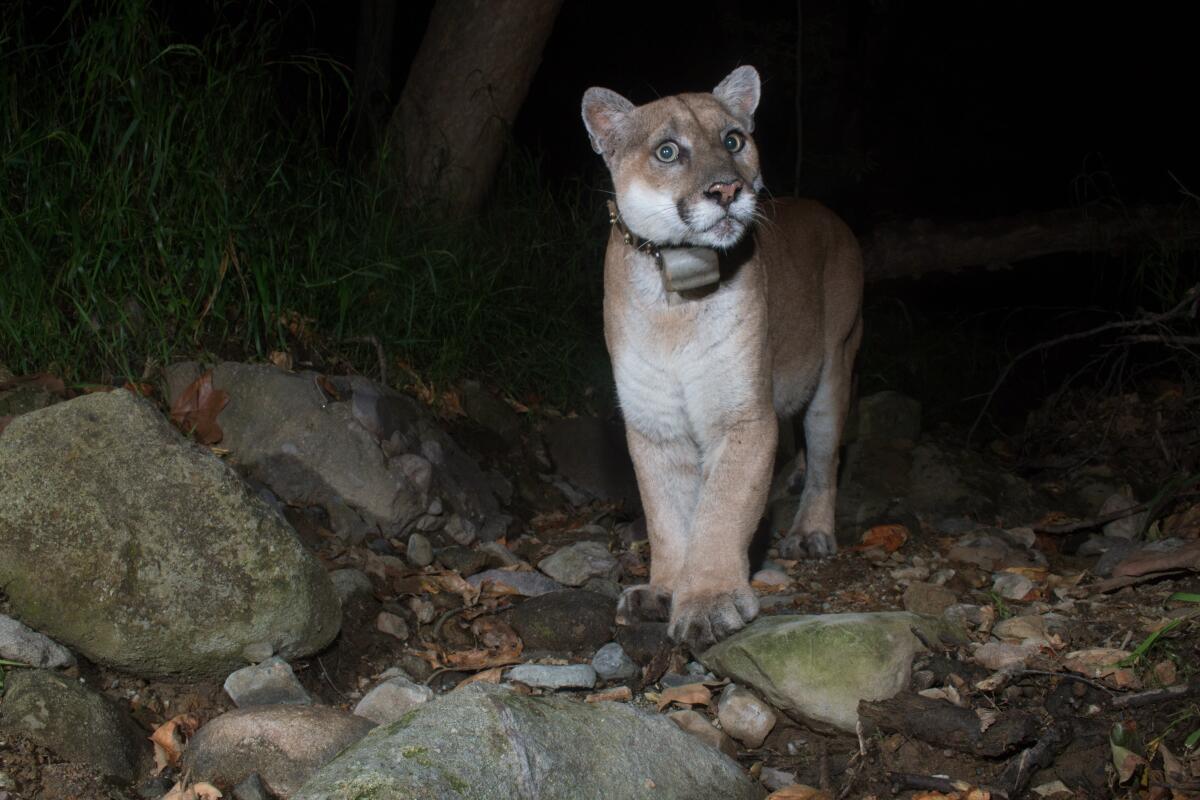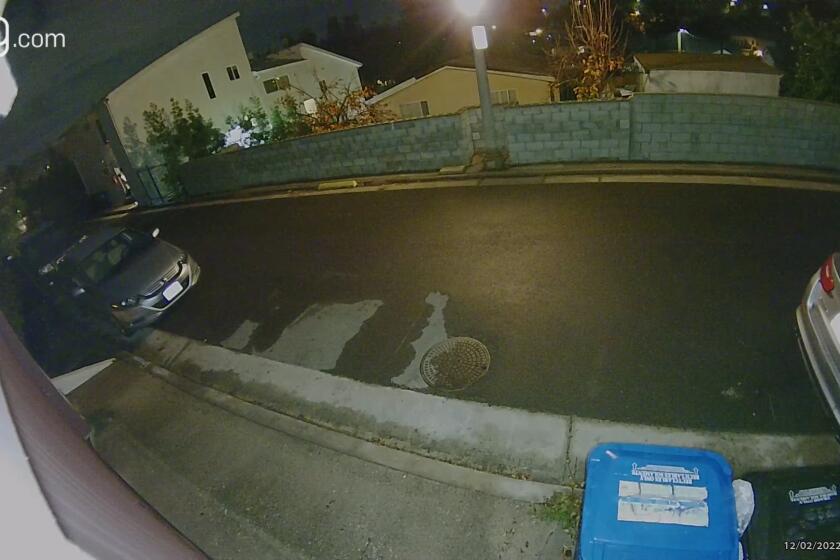The search for P-22 is on. Here’s why capturing L.A.’s star mountain lion could take weeks

- Share via
The search is on for Los Angeles’ most famous wild cat.
Wildlife officials have said they plan to capture the mountain lion P-22 after concerns arose over possible “signs of distress” including killing a leashed Chihuahua last month and attacking another Chihuahua last week.
Although the prospect of finding and capturing an animal wearing a tracking collar may seem simple, a wildlife expert familiar with previous efforts to track and trap mountain lions told The Times on Friday that such operations are unpredictably complex.
“It’s up to the cat,” said Beth Pratt, the National Wildlife Federation’s regional executive director for California and leader of the nonprofit’s #SaveLACougars campaign. “It could be a couple of days or it could be in a month. It just depends on how quickly the cat cooperates.”
The California Department of Fish and Wildlife’s announcement comes after the mountain lion killed a dog last month and attacked another last week.
Elsewhere in the country, a common technique to capture cougars is to use hounds to force the cat into a tree or to corner it, she said.
But in Los Angeles, officials will avoid that tactic because of the possibility that the mountain lion will run into a residential area, down a major street or onto a highway, Pratt said.
“We don’t want the O.J. [Simpson freeway] chase happening with P-22,” she said.
Locally, wildlife experts use a baited cage to trap mountain lions, but it can be weeks before the cat takes the bait.
And simply finding where a mountain lion might be is a major challenge, Pratt said.
P-22 wears a tracking collar, but the device runs on batteries, and setting it up to provide real-time tracking would quickly drain its power supply.
The GPS collars for mountain lions in the National Park Service’s Los Angeles-area study, including P-22, send out one location ping during the day and hourly pings at night, according to Pratt.
“You have to be in the right place at the right time, and mountain lions can travel up to 25 miles in a day,” she said.
Angelenos can’t help but see themselves in P-22. He’s carved out a life in a crowded city. And though he’s still handsome for his advanced age, he’s terminally single.
If searchers get close enough, they could be able to pick up the radio signal also transmitted by P-22’s collar, which could put them within 50 feet of the feline.
But mountain lions, nicknamed “ghost cats,” can be thought of as introverts who don’t want to be found, Pratt said.
“They hunt by hiding,” she said. “They are extremely good at hiding. Most people never see a mountain lion [in person].”
The longtime environmental advocate said Los Angeles residents should be recognized for coexisting with P-22 and for generally acknowledging that his recent behavior is part of his nature as a predator.
Residents should not try to intervene in any way or try to capture P-22 themselves, but if they see the mountain lion or catch him on security camera video, they should send tips to the Santa Monica Mountains National Recreation Area, Pratt said.
Pet owners should be cautious and keep a close eye on their animals, she said.
Mountain lions are most active at night and bringing dogs and cats inside by dusk is a good precaution.
Updates on the search effort were not available Saturday from state wildlife officials or the Santa Monica Mountains National Recreation Area.
More to Read
Sign up for Essential California
The most important California stories and recommendations in your inbox every morning.
You may occasionally receive promotional content from the Los Angeles Times.













